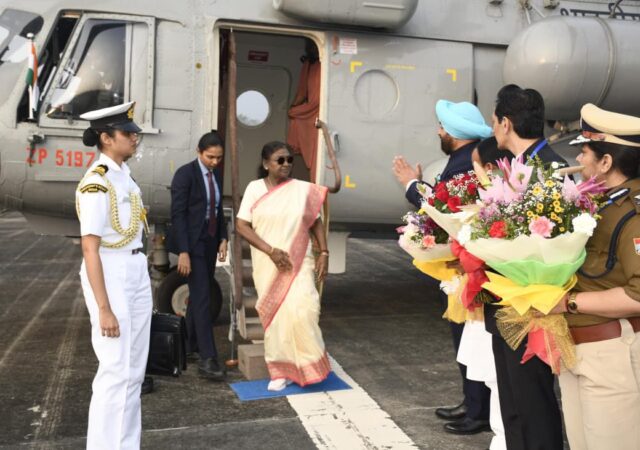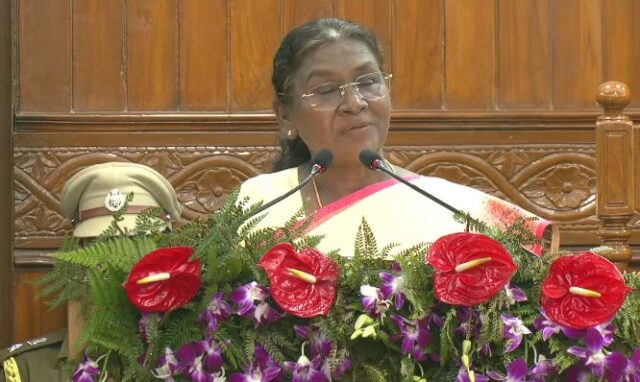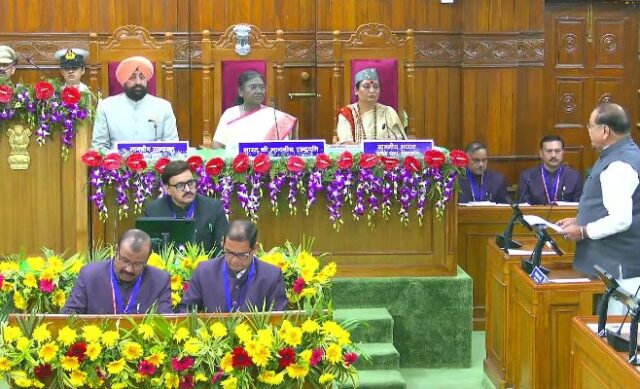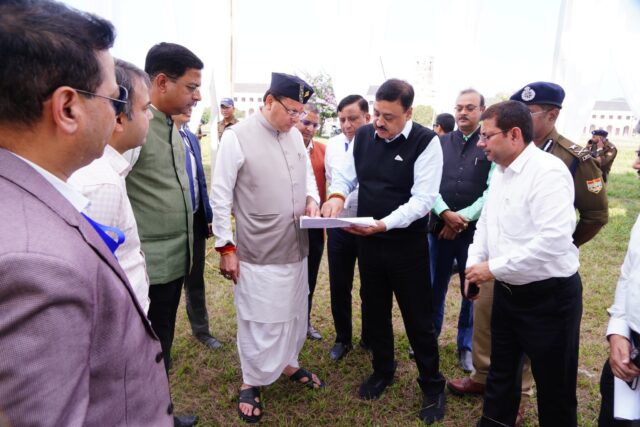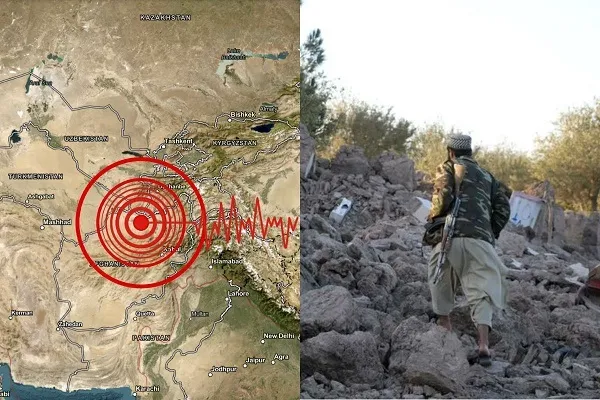Why are you giving arguments in Arabic, we don’t understand: Supreme Court during hearing in hijab case
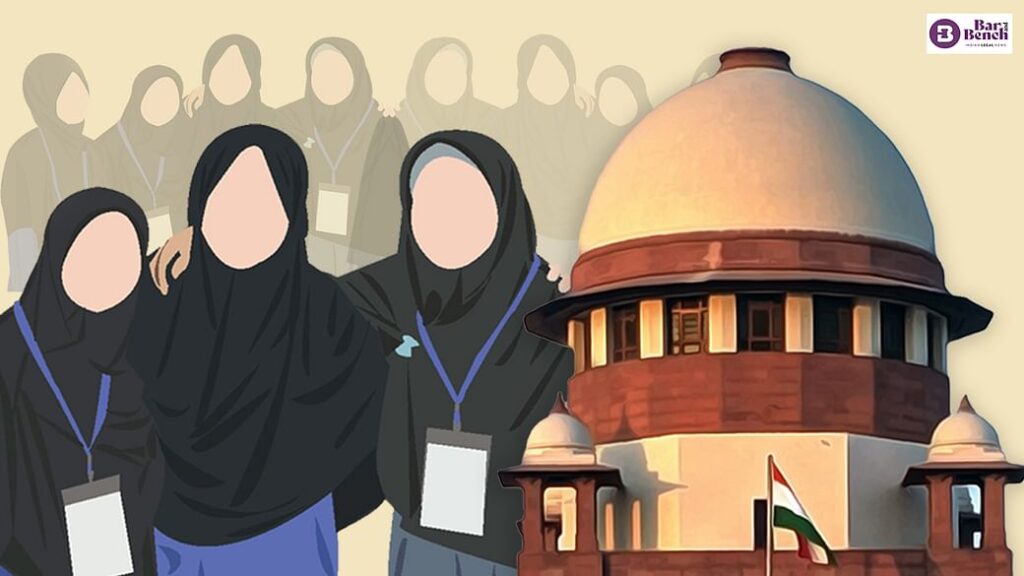
Hearing on hijab ban continues in Supreme Court. Jayna Kothari, appearing for the petitioner student, said that this is discrimination on the basis of both gender and religion. Justice Sudhanshu Dhulia said – Dr. Dhawan has argued this. On this, Kothari said that yes, I will take it further. Here discrimination has been done both in terms of gender and religion, because only Muslim girls are its victims. The end result was to force him to follow his religious orders, thereby abandoning education or giving up an important aspect of his religion to pursue education. Senior advocate Dushyant Dave started the argument and said that this decision is more than uniform. The matter should be heard by a larger bench. The court is the custodian of the constitutional rights of the citizens.
Senior advocate Dushyant Dave told Justices Hemant Gupta and Sudhanshu Dhulia that they should not have heard the matter and should refer the matter to a larger bench. Dave said that the bench cannot limit him to present his arguments till the stipulated time. Dave did not accede to the court’s request to end the arguments today and said that he would argue after the arguments of the petitioners’ lawyers were completed.
In the hijab ban hearing, the lawyer gave arguments in Arabic. The Supreme Court said that he should give arguments in English. We do not understand Arabic. The lawyer said that the Quran has been cited in the High Court’s decision. Actually- Senior Advocate Abdul Majeed Dhar started presenting his arguments before the bench. He told the bench that he is as much a student of the Quran as he is a law student. Justice Hemant Gupta said that one argument is that we cannot interpret the Quran. Dhar said that what the Karnataka High Court has said is wrong. Justice Gupta: Whether or not we are taking an independent opinion. Justice Gupta said that and why are you studying Arabic. We do not understand Arabic.
Meenakshi Arora – UN Convention provides protection to children to practice their religion and against discrimination. Freedom to practice one’s religion or beliefs can only be subject to such limits as are prescribed by law. necessary for the protection of public safety, order, health or morality, or the fundamental rights and freedoms of others. The state government is there to ensure that school discipline is in accordance with the human dignity of the child and as per the present UN Convention.
Justice Dhulia: The age limit of the child is up to 18 years?
Meenakshi Arora: Yes UN Convention provides protection to children to follow their religion and against discrimination. The UN committee found that the ban on scarves is in violation of a tradition that we have upheld. It states that the dress code should encourage participation of students rather than prevent them from attending school. They are talking about France here. We are a secular country.
Justice Dhulia said that headscarf is banned in France
Meenakshi Arora replied because France follows a very strict secular policy where no religious performances are allowed.
On this, Justice Dhulia said that and we do not do this.
Meenakshi Arora said does hijab in any way hurt public order, morality? On the contrary, you drop the kids out of school. You marginalize them. We are not teaching religious tolerance to children. The state government has no power to issue a government order against a central law while the state has issued a government order, allowing hijab in Kendriya Vidyalaya. It is in accordance with the law – the government order is wrong
Meenakshi Arora said, “If we impose restrictions then it should be same for all. Discrimination should not be done and should proceed according to international activities. In such a situation, the court should look into the discrimination which was done in the government order in Karnataka.” Has gone
Justice Gupta : All the lawyers also raised the issues of Quran to an extent and then you all say that this court is not equipped to interpret the Quran and we are going beyond our authority. Arguing and then saying we can’t explain and if we do that we cross our briefs.
Meenakshi Arora: When courts across the world and a large section of the population consider the hijab to be necessary – then who are we to stop it?
Now Advocate Shoaib Alam is arguing.
Shoaib Alam – I am answering the question that why the debate on essential religious practice was done in the High Court? For that we will see the order of the government. I am talking about three decisions here.
Alam said these judgments contained references to essential religious practices. So there was a real need for us to argue.
Court: But nobody stopped you from arguing there, which you are arguing now.
Shoaib Alam: The effect of the government’s order is that- I will teach you, you give me your right to privacy.
The state cannot ask me to surrender my right to privacy.
Colin in the Hijab case: As far as the Hijab being an integral part of Islam is concerned, once the tradition is established, it comes under Article 15, that is, it becomes part of the fundamental rights. Hijab has also been considered a part of Islamic tradition in the Quran. In support of his argument, he cited the decisions of the courts of South Africa, Canada and Kenya. He said that in these decisions, religious tolerance and religious dress have been talked about. The decision of the Kenya Court explains the four aspects very well in this matter. We live in India. Millions of women and girls wear hijab here for centuries
Justice Hemant Gupta asked that the question here is whether girls used to wear hijab with school dress in those schools even before the government order came in December 2021? The issue is not whether it was so in certain states or not, but it is certain that the hijab has been a part of the tradition. The hijab has been part of the Islamic tradition of wearing for millions of women for centuries. Now, before or after what time the girls kept wearing it, it does not matter. There are many hurtful remarks in the High Court’s decision. The court even called the hijab the basis of social discrimination. can’t trust it
Justice Gupta said that the court has not said social discrimination. The court has cited the statement of Dr. Ambedkar
Justice Dhulia also said that you cannot read the orders and decisions of the court from here and there on your own free will. It has to be read and understood in totality.
Colin Gonsalves: The Sikhs have been given the freedom to keep the kirpan. Wearing a turban is allowed. When the kirpan and turban can be given constitutional protection, then what is the problem with the hijab. Why can’t this protection extend to the hijab? The Constitution of India is a living document. It is modified according to the time and circumstances. Colin’s argument is complete.
Senior Advocate Kapil Sibal: This matter should be heard by the Constitution Bench. Hijab is a matter in which the identity of who is wearing it, where did it come from, why is it wearing it, all these are investigated. In India, people of all societies and sections wear different types of clothes but in public places. They convey their tradition and mood through clothes, but in schools or many institutions, where there is uniform, people have the right to follow those religious traditions. It is a right that does not have a bad effect on dignity and morality.
Sibal: You have to see the answer in Article 19. If wearing dress is part of the expression, then you have to find the limit under 19 which is public order, morality, decency. This is the real constitutional question. Let’s say there was no government order, and a school said we wouldn’t let you wear it. Will it be allowed? No. It is not in Article 19. Hijab is now a part of my personality, a part of me. Can’t take it away from me. It is part of my cultural tradition. Does my right stop at the college gate?
Sibal said the law cannot prohibit expression unless it is against public order or morality and decency. No such untoward incident has happened in Karnataka, which would create a situation for the state to intervene contrary to the Constitution.
Sibal: I have data on the number of dropouts of Muslim girls after the hijab decision. According to an RTI reply received by a newspaper, out of 900 Muslim girls in Dakshina Kannada, 145 took transfer certificates. It is around 16 per cent and it is very disturbing.

